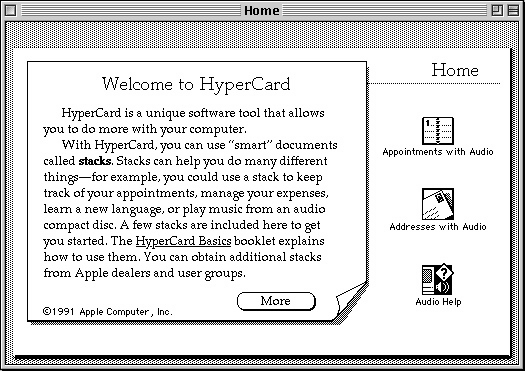11.2.7 HyperCard (Bill Atkinson 1987)



Bill Atkinson originally designed HyperCard (already discussed in Section 2.2.3.1) as a graphic programming environment and many of its applications have nothing to do with hypertext [Nie95]. Nevertheless, it caused a real breakthrough for hypermedia in 1987, probably because it was launched free with every Macintosh sold by Apple from 1987 to 1992. Since it was fairly easy to use, many Mac users started to create multimedia presentations. Even after 1992 a free version of a HyperCard- reader was still shipped.
HyperCard is a frame-based system like KMS with the major drawback that link anchors are not strings like in Guide, but physical positions on a document (card). Hence, you cannot edit a document without redesigning the areas of the links. A card is the basic node of HyperCard, and a collection of cards is called stack. Links do not have to be hardwired but can also be programmed in HyperTalk, HyperCard's scripting language. HyperTalk is a very ``easy to use'' programming language, which could be another reason why HyperCard became so popular.
The popularity of HyperCard resulted in the birth of many followers like SuperCard, Plus, MetaCard, Toolbook, Authorware Professional, and HM- Card.
Quelle: Institut für Informationssysteme und Computer Medien.
